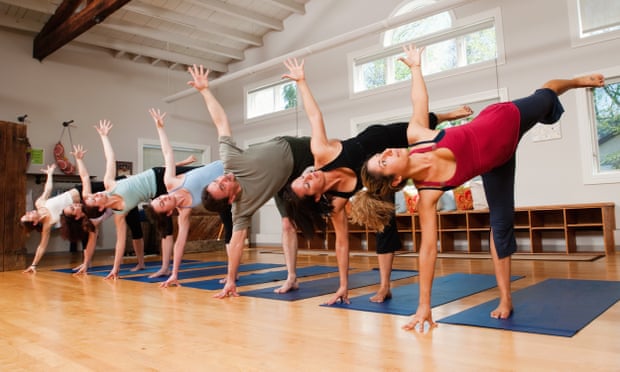
Last time I tried to do a yoga class, an angry Australian man the consistency of a cheesestring shouted at me for “flooding my system with empty wetness”, after I tried to drink some water. I was in some foul-smelling corner of a north London leisure centre surrounded by people in petrol spill Lycra, listening to the slow release of methane while the receptionist outside did a little light filing to Magic FM. It was about as far from the gurus of northern India as it is possible to be. And yet, as long as nobody actually harms themselves in the classes, I would defend even his right to practise yoga in any way he wishes, the wiry Antipodean arsehole.
I am sister to a half-Indian yoga practitioner and daughter to a English yoga teacher, so I have some sympathy with the opinion that “there are cultural issues of implication involved in the practice [of yoga]” – which was the complaint made by staff at the Centre for Students with Disabilities where the free classes took place, and upheld by the Ottawa Student Federation. I would also make the case that yoga, like flour and eggs, can be what you make it.
It may have been a while since I regularly practised, but even I can feel my sphincter twitching into full paschimottanasana at the prospect of yoga being relabelled “mindful stretching”. And yet, for many, this is what yoga is – a little bit of bending. Yoga is not necessarily a religious practice. Nor is it held in aspic. If, as for many, it catalyses an interest in the cultural, spiritual and historical movements that came together to create it then that’s lovely. If you decide to go on a yoga retreat to India and while there go and stay in an ashram and learn more about the unfathomable rules of dharma and karma, then that’s great. If you decide, after a few months of doing yoga down at your local Buddhist centre that you’d actually like to know more about the philosophy behind the yoga sutras, then I’m happy for you. But it is by no means culturally insensitive to go to a free yoga class just because it makes you feel better. Or because you like the bending.
There are plenty of things that could, and should, act as a daily reminder of the harm we wreaked through colonialisation; tea, sugar, tobacco, coffee, the word “pyjamas”. We should be wary and we should try to make amends. But in many ways, yoga is often treated with more respect, with greater cultural sensitivity than the people still growing the crops and providing the services upon which we, in the west, rely.
Of course it’s embarrassing to see a grown man in drawstring cotton churidars and a tie-dye vest with the om sign printed across his nipples, crowing about the rigidity of his navasana pose. And of course it’s cloying to listen to a woman in buttock-sucking high-shine leggings talking about the chi in her smoothie as she wafts out of an eye-wateringly expensive yoga class held on the fourth floor of some metropolitan members club. And, of course, it’s all a long way from the philosophical and physiological practices put down by Patanjali in around 100BC.
But yoga has been stretched into a new entity, one far removed from the cultural circumstances that first spawned it. And to practise that, however you see fit, is absolutely fine. Now, if you’ll excuse me, I’m off to do a little mindful stretching, followed by a heavy session of thoughtful bending and some rugged cognisant twisting.

[“source-theguardian”]